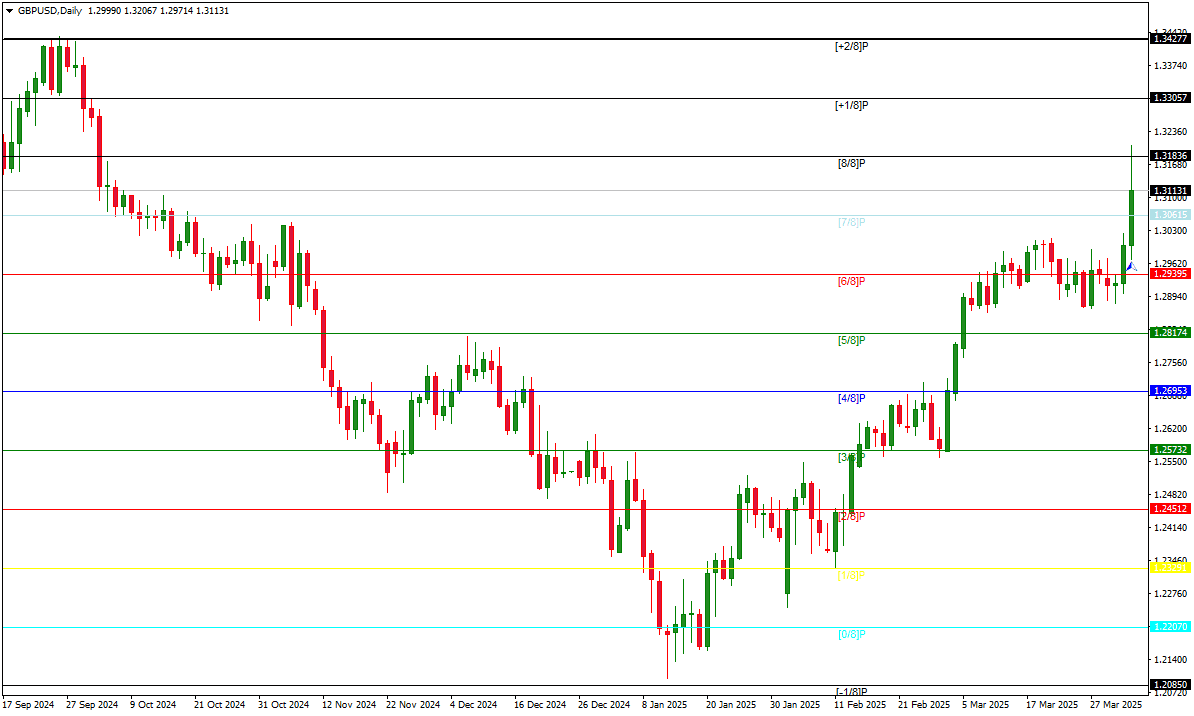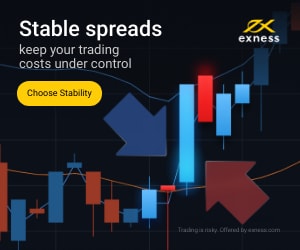Murrey Math Lines (Murrey Levels) in Trading
Murrey Math Lines (MML), also known as Murrey Levels, are a technical analysis tool developed by T. H. Murrey based on Gann theory. These levels help traders identify support and resistance zones, potential breakout areas, and trend reversals.

1. What Are Murrey Math Lines?
Murrey Math Lines divide a price range into eight horizontal levels, similar to Fibonacci retracements or pivot points. These levels are based on the 1/8ths concept, which originates from W.D. Gann’s trading methodology.
The idea is that markets tend to move in fractional parts, and these levels help traders understand where price action may stall or reverse.
2. Structure of Murrey Math Lines
Murrey Levels are denoted as (x/8) fractions of a given price range:
| Level |
Name |
Significance |
| +2/8 |
Extreme Overshoot |
Price is highly overbought (possible reversal) |
| +1/8 |
Weak Overbought |
Price may reverse unless in a strong uptrend |
| 8/8 |
Ultimate Resistance |
Strongest resistance level (hard to break) |
| 7/8 |
Weak Resistance |
A minor resistance, price might reverse here |
| 6/8 |
Pivot Sell |
A resistance area where price might turn down |
| 5/8 |
Range Midpoint |
Fair price level, often seen as equilibrium |
| 4/8 |
Major Support/Resistance |
Strongest support or resistance zone |
| 3/8 |
Pivot Buy |
Price tends to hold above this level in uptrends |
| 2/8 |
Weak Support |
Weak support, price might break below easily |
| 1/8 |
Weakest Support |
Price may reverse unless in a strong downtrend |
| 0/8 |
Ultimate Support |
Strongest support level (hard to break) |
| -1/8 |
Weak Oversold |
Price may bounce unless in a strong downtrend |
| -2/8 |
Extreme Undershoot |
Price is highly oversold (possible reversal) |
3. How to Use Murrey Math Lines in Trading
Murrey Levels are useful for:
a) Identifying Key Support & Resistance
b) Spotting Trend Continuation or Reversals
-
If price breaks above 8/8, it might indicate a strong uptrend.
-
If price breaks below 0/8, it signals a strong downtrend.
-
Price consolidating around 4/8 means indecision.
c) Trading Range Markets
d) Entering Trades Based on Levels
-
Buy near support (0/8, 1/8, 2/8) and sell near resistance (6/8, 7/8, 8/8).
-
Look for breakouts at 4/8 or 8/8 for bullish moves, and 4/8 or 0/8 for bearish moves.
4. Murrey Math vs. Fibonacci & Pivot Points
| Feature |
Murrey Math |
Fibonacci |
Pivot Points |
| Based on |
Gann & Geometry |
Golden Ratio |
Previous High, Low, Close |
| Levels Used |
Fixed 1/8th divisions |
23.6%, 38.2%, 50%, etc. |
Daily, Weekly, Monthly |
| Best For |
Support/Resistance |
Retracements |
Intraday Trading |
5. How to Add Murrey Levels on a Chart
In TradingView or MT4/MT5:
-
Open your chart and apply Murrey Math Indicator (available in custom indicators).
-
Adjust the settings to match the asset’s volatility.
-
Use the higher timeframes (H4, D1, W1) for better accuracy.
-
Identify key reversal zones and trend continuation levels.
Murrey Math Formula
Each Murrey Level is derived from a trading range defined as:
Range=High?Low
Each level is then calculated using:
MML(n)=Low+(8n?×Range)
Where:
-
MML(n) is the Murrey Level at n/8 (e.g., 0/8, 1/8, …, 8/8).
-
Low is the lowest price in the selected period.
-
High is the highest price in the selected period.
-
Range is the difference between the High and Low.
-
n is the fraction (0 to 8).
Example Calculation
Given:
-
High = 100
-
Low = 60
-
Range = 100 – 60 = 40
Now, calculate each Murrey Math Line:
| Murrey Level |
Formula |
Value |
| 0/8 (Ultimate Support) |
60 + (0/8 × 40) |
60 |
| 1/8 (Weak Support) |
60 + (1/8 × 40) |
65 |
| 2/8 (Weak Support) |
60 + (2/8 × 40) |
70 |
| 3/8 (Pivot Buy Zone) |
60 + (3/8 × 40) |
75 |
| 4/8 (Major S/R Level) |
60 + (4/8 × 40) |
80 |
| 5/8 (Range Midpoint) |
60 + (5/8 × 40) |
85 |
| 6/8 (Pivot Sell Zone) |
60 + (6/8 × 40) |
90 |
| 7/8 (Weak Resistance) |
60 + (7/8 × 40) |
95 |
| 8/8 (Ultimate Resistance) |
60 + (8/8 × 40) |
100 |
Advanced Adjustments
-
If price breaks 8/8, the range shifts up.
-
If price breaks 0/8, the range shifts down.
-
-1/8 and +1/8 levels exist outside the main structure for extreme conditions.
Murrey Math Levels (MML) remain the same across different timeframes because they are based on a fixed range calculation derived from a specific lookback period.
Which Period Does Murrey Math Use to Calculate High and Low?
By default, Murrey Math uses a 64-period lookback to determine the highest high and lowest low for calculations.
Formula:
High=max(price over last 64 bars)
Low=min(price over last 64 bars)
Then, the range is divided into 8 equal parts.
Why 64 Periods?
-
Murrey Math is based on Gann’s Square of 8, and 64 (8²) is a key number in Gann theory.
-
It helps capture medium-term price movements without being too short-term or too long-term.
Does It Always Use 64 Periods?
-
Yes, by default, but some versions of Murrey indicators allow customization.
-
Some traders adjust it to 32, 128, or even 256 periods for different market conditions.
Key Implications of a Fixed 64-Period Range
-
Same Levels on Different Timeframes – Since the calculation uses a static historical range, MML levels will appear identical on M1, M5, H1, and D1 (unless the price structure changes).
-
Best Used on Higher Timeframes – Since it doesn’t adjust dynamically like Fibonacci or Pivot Points, MML is best suited for H1, H4, D1, and W1 charts.
-
Breakouts Require Range Updates – If price breaks beyond the calculated high or low, the MML range must shift, forming a new set of levels.
Would you like a custom Murrey Math indicator where you can change the lookback period? ?
Murrey Math typically calculates the 64-bar range on the current timeframe that you are viewing.
How Murrey Math Determines High & Low
-
If you are on H1, it takes the highest high and lowest low of the last 64 hourly bars (64 hours total).
-
If you are on D1, it uses the last 64 daily bars (64 days total).
-
If you are on M15, it takes the last 64×15-minute bars (16 hours total).
Why Do Murrey Levels Look the Same Across Timeframes?
-
The calculation does not reset when you switch timeframes.
-
Since many traders use higher timeframes (H4, D1) for trend analysis, Murrey Levels remain consistent across charts.
-
The indicator may internally use a fixed timeframe like D1 or H4 regardless of the chart you are viewing.
How to Check Which Timeframe Murrey Uses?
-
Look at the settings in your platform – Some versions of Murrey indicators allow changing the lookback period and timeframe.
-
Manually verify the High & Low over 64 periods on different timeframes to see if it matches a higher timeframe.
Which Timeframe is Best for Murrey Math?
-
H4 and D1 are the most reliable, as they capture broader market structure.
-
Lower timeframes (M5, M15) may have more noise and false signals.
Would you like a custom MT4/MT5 script to calculate Murrey Levels based on a chosen timeframe? ?
Conclusion: Is Murrey Math Effective?
Murrey Math Lines provide precise levels of support and resistance but should be used alongside trend analysis, price action, and other indicators (such as RSI, Moving Averages). They work best in ranging and trending markets when combined with breakout confirmation.
Would you like a practical example or a backtest of Murrey Math on a specific asset? ?
Trader at Leanta Capital
Igor has been a trader since 2007. Currently, Igor works for several prop trading companies.
He is an expert in financial niche, long-term trading, and weekly technical levels.
The primary field of Igor's research is the application of machine learning in algorithmic trading.
Education: Computer Engineering and Ph.D. in machine learning.
Igor regularly publishes trading-related videos on the
Fxigor Youtube channel.
To contact Igor write on:
igor@forex.in.rs

























